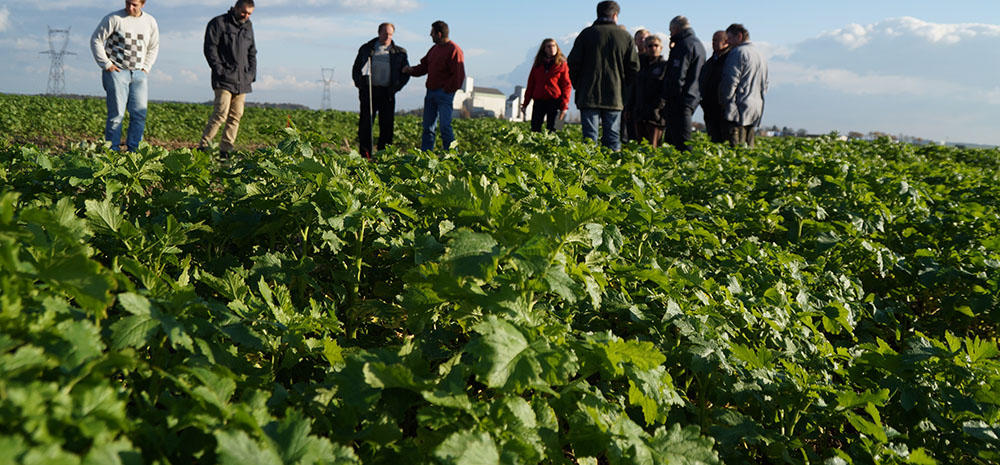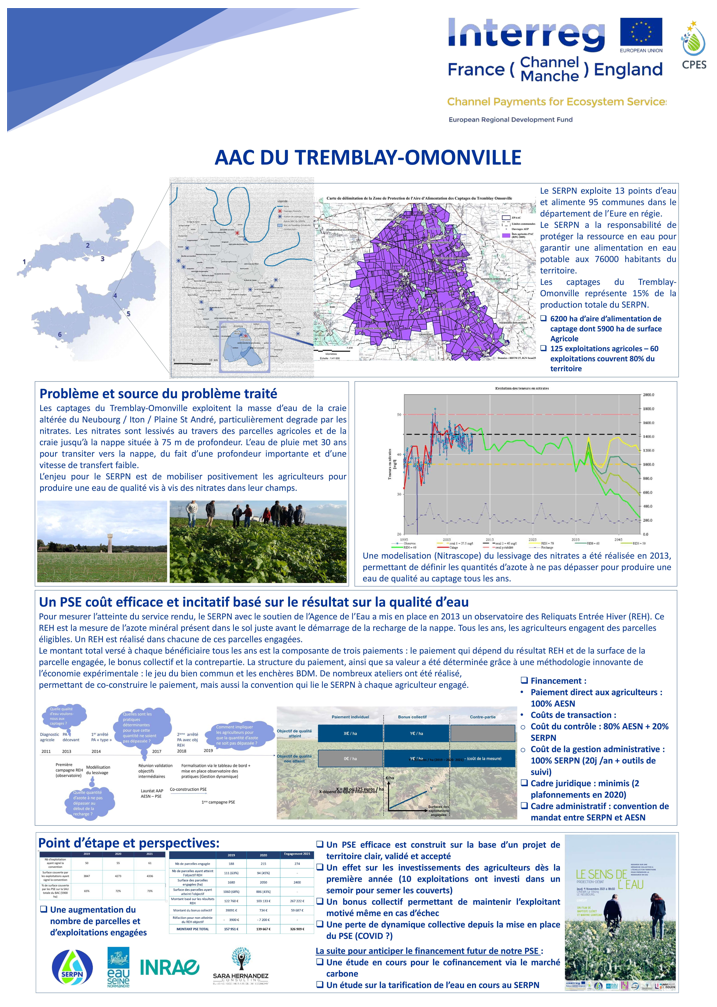The Roumois and Plateau de Neubourg Water Union (SERPN) is a public industrial and commercial establishment which covers 100 municipalities and has 33,000 subscribers consuming 3,300,000m3 of water a year, in the department of Eure, France. Among their catchment recharge areas, three are prioritized for the following water quality issues: sediment-related turbidity, pesticide and nitrates. In the Tremblay-Omonville catchment (BAC), it the nitrate is the predominant problem.
The SERPN Territory suffers from two different water quality issues. In the North, the water points are sensitive to turbidity and therefore also to pesticides adsorbed to the suspended matter. This pollution is due to the karst nature of the area (rapid infiltration via sinkholes). The Varras water point produces in the North 30% of the SERPN's water. This borehole is equipped with an ultrafiltration plant to ensure water meets distribution standards.
In the South, catchments have nitrate concentrations above 40 mg / L: this is characteristic of agricultural areas where slow infiltration through chalk predominates. No treatment, except chlorination, is performed on the raw water of these catchments. Therefore, if the standard for nitrates is exceeded by 50 mg / L, only shutting down the pumps or mixing water through the interconnections of the network would supply the population with drinking water. These measures can only be temporary. That is why the SERPN wants to work on a long-term strategy to regain the quality of raw water on its territory.
Tremblay-Omonville catchment, a pilot site for the CPES project, is impacted by nitrates.

From a hydrogeological point of view, the two catchments of the Tremblay abstract from the groundwater table of La Craie. The hydrogeological layers (thickness of soil and chalk) are homogeneous throughout the territory so the intrinsic vulnerability is homogeneous. As a result, there is no priority area on the BAC and the work on practice changes will be the same for all farmers.
From an agricultural point of view, the catchment represents an area of 6200 Ha including 5900 Ha of Useful Agricultural Area (UAA). It is located on the plateau of Neubourg, a very productive agricultural area, which produces a wide variety of crops (cereals, beets, flax, potatoes ...). 125 farms have in at least one field in the territory of which 60 cover 80% of the agricultural area of the BAC.
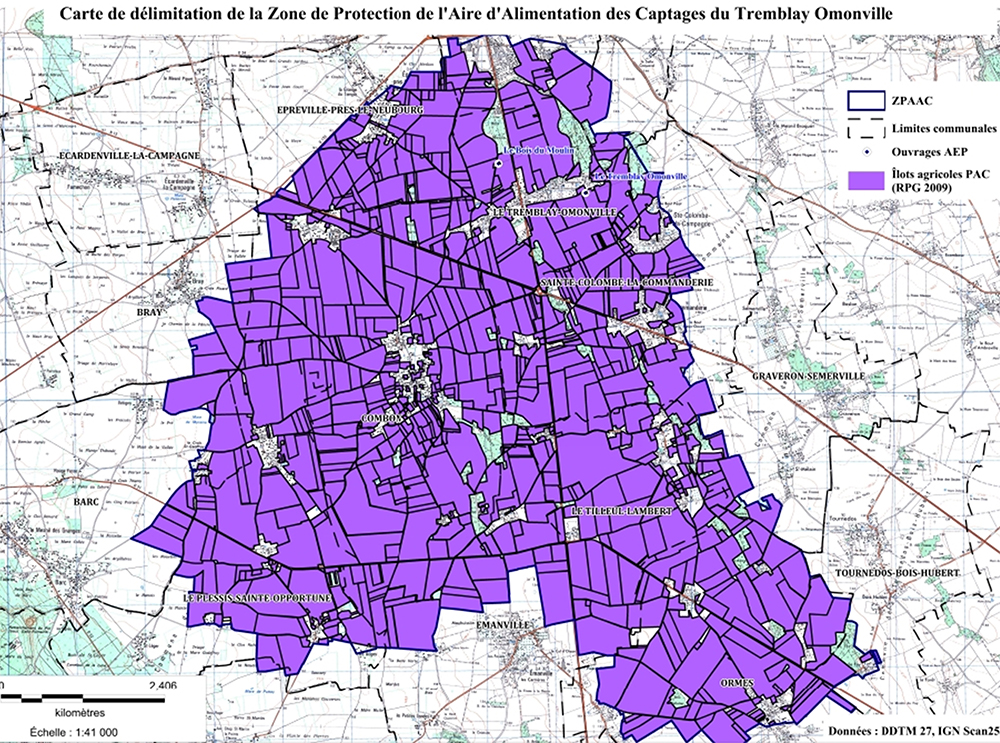
Construction of preventive measures to regain the quality of water
These "catchment approaches" make it possible to work on a territorial scale with stakeholders on sources of pollutants. Studies to define the catchment drainage areas were launched in 2011. Following the definition of the perimeters, the work with the farmers started in order to set up an action program.
Specific tools on nitrates have been designed and used to better understand the functioning and the impact of practices on water quality. As well as tools, raising awareness among farmers, and control and monitoring of farm practices has also been used. Created in 2012, the first tool is a model of nitrate leaching across fields with several input data types (hydrogeology, weather, land cover, agricultural practices and water quality measurements for more than 30 years). First results show that given the depth of the catchments, the time of inertia is important, i.e. 30 years of latency between the current practices and the measurements with catchment. On the other hand, the model simulated the impact of changes in practices on nitrate concentration at long-term capture. The change in practice agreed upon by the steering committee (Water Agency, farmers, Eure Agriculture Chamber, Water syndicate) concerns the indicator "Winter Incoming N Balance". Indeed, the model shows that below 60 units of N per hectare per year at the scale of the territory, the concentration of nitrates at collection would fall below 37.5 mg / L.
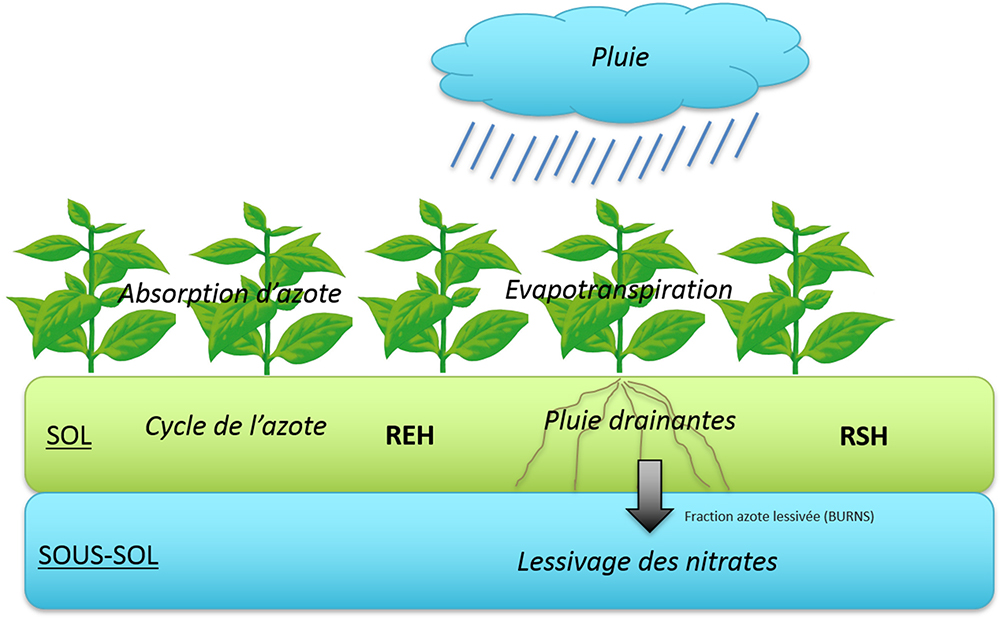
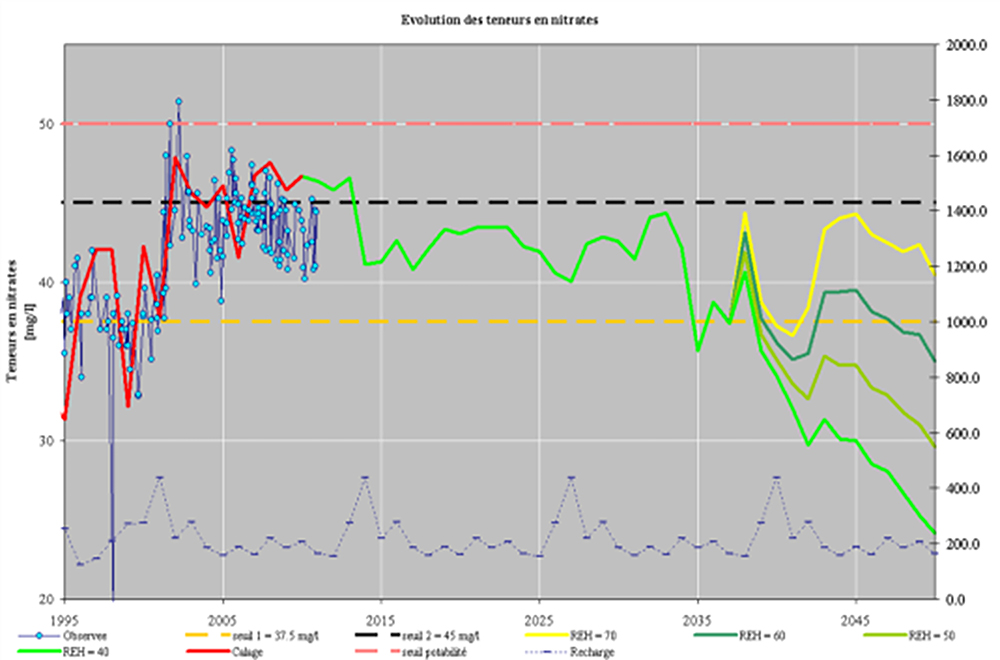
To measure the achievement of this objective, the SERPN with the support of the Water Agency, the Departmental Council and the Chamber of Agriculture, have set up an observatory. Agricultural fields are sampled to measure the amount of nitrogen present at a key moment: when the aquifer recharge begins, ie when the soil is saturated with water. The observatory started in 2013 on a voluntary basis. The SERPN has therefore developed an animation strategy to mobilize a maximum number of farmers in the area.
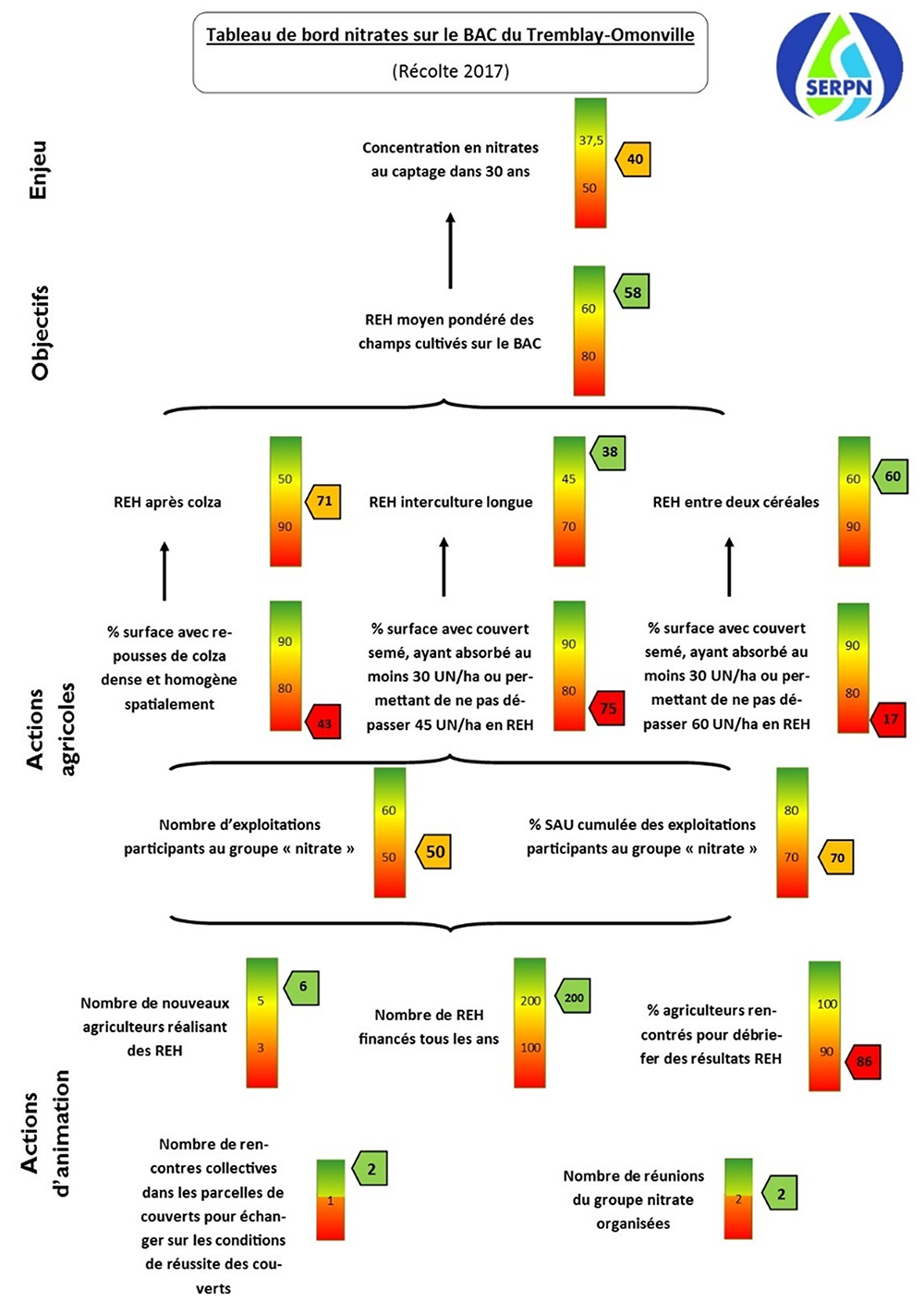 Since 2016, the BAC Tremblay-Omonville is a pilot site for a project led by INRA and funded by ONEMA. This project aims to test an approach built by INRA on catchment areas in France. The principle is:
Since 2016, the BAC Tremblay-Omonville is a pilot site for a project led by INRA and funded by ONEMA. This project aims to test an approach built by INRA on catchment areas in France. The principle is:
- To co-build a project with the stakeholders of the territory and focus on the results seen with respect to the water quality
- Implement dynamic management using a dashboard
- To set up an agricultural animation that is derived from the results
INRA has created resources to mobilize farmers on groundwater catchments. The objective is to see how these resources allow dynamic management of actions on the catchment. The resources are:
1. The dashboard: a tool at the service of the steering committee and farmers
- The dashboard is used to look at the catchment: the actions implemented, the results obtained for the agricultural actions and also water quality. These observations are intended to educate and establish a relationship of trust
- And to adjust the local project over time: each year, the steering group analyses whether the resources and / or the expected results are or are not met. It can therefore review the local project to ensure its success. This tool allows flexibility and progressivity.
2. Key moments with farmers:
- The Catchment Tour in autumn is used to observe the state of the fields and the results obtained, to diagnose the difference between obtained and expected results, to compare the collective project with the individual project of the farmer
- Analysis of the results at the fields during January: analyse the results obtained individually, identify any room for manoeuvre in the management of the nitrogen cycle, and exchange confidence on factual and observed information.
The SERPN and the CPES project
The "Winter Incoming N Balance" is dependent on the climatic conditions of the year. In order to ensure a better control of the "Winter Incoming N Balance" result in the territory, the SERPN must mobilize the maximum number of farmers to cover a larger area on the BAC. The mobilization of farmers depends on their willingness to act. To date, 50 out of 125 farms present on the BAC have engaged in the project.
Could a PES-type financial tool mobilize a larger number of actors? This is a question that the SERPN wishes to answer by participating in the CPES project.
